Building for the future: In post-quake Nepal, masons learn new skills
Nepalese masons have not only learnt to build earthquake-resilient buildings as part of a training initiative by Singapore-based NGO Mercy Relief. They have also gone on to find more work and become more employable.
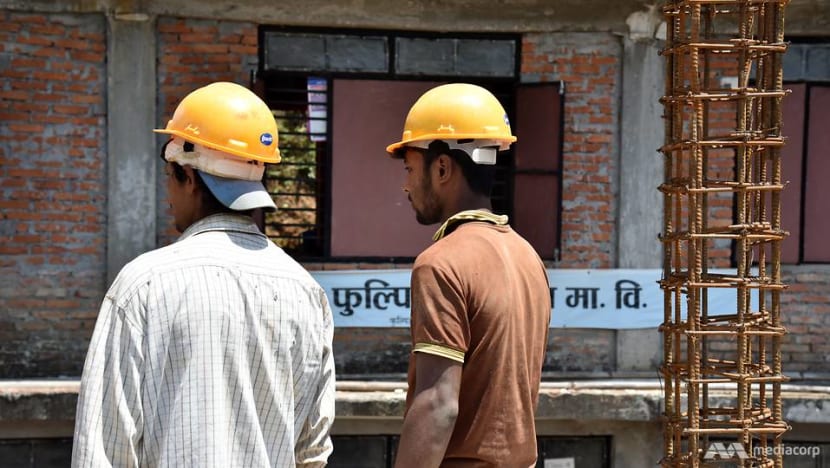
Construction work is ongoing at the Phulpingkot Secondary School in Sindhupalchowk, Nepal. (Photo: Lianne Chia)
SINDHUPALCHOWK, Nepal: The Phulpingkot Secondary School lies deep in the heart of Nepal’s rural Sindhupalchowk district. It is a four-hour drive from Kathmandu, up and down bumpy roads and rough terrain, with stunning vistas of mountains and rivers.
Dotting the landscape and the various villages en route to the school are piles of debris from collapsed buildings. Many of those still standing have visible cracks. The damage took place more than two years ago in a devastating earthquake that shook the country, with the rebuilding process still far from complete.
Sindhupalchowk was one of the most severely hit districts, with about 98 per cent of houses damaged or destroyed. Phulpingkot, one of the rural areas in the district where the school is located, was hit even harder.
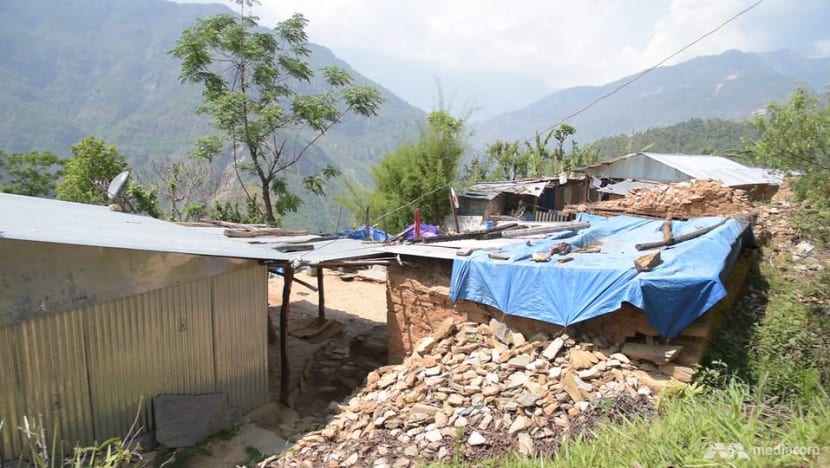
Singapore-based humanitarian NGO Mercy Relief estimates that about 99 per cent of houses there were completely demolished. Most of these, it said, were low-strength, made of masonry stone with mud mortar, and loosely fitted with traditional materials.
And in this, the organisation saw a gap it hoped to fill: Going beyond helping communities to rebuild their homes and instead passing on the skills for constructing them to a higher, more robust standard.
FEEDING MASONS FOR A LIFETIME
“If you think about the houses, schools and buildings that were destroyed, what is really in demand right now are skilled labourers and masons,” said Zhang Tingjun, Mercy Relief’s executive director. “Many different partners were putting in a lot of effort to build hardware like buildings, so we decided to focus on empowerment and building soft skills instead.”
This, she explained, was the underlying principle behind the mason training programme. Mercy Relief teamed up with an engineering school to teach masons how to construct earthquake-resilient building. The five-day training project initially started off with 35 masons, but has since expanded to 65. The original 35 have gone on to become officially registered with the local government for reconstruction projects.
Some of them have been deployed to work on Mercy Relief’s school building projects, and at the Phulpingkot Secondary School, construction of a new two-storey building is in full swing.
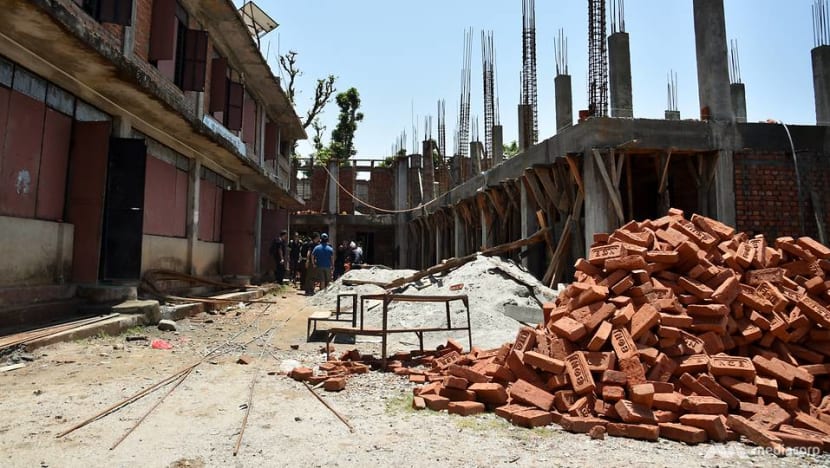
BUILDING FOR THE FUTURE
There was a loud clatter as a worker hauled a basketful of bricks up to the second level of the site. A cloud of dust formed as he dropped his load.
Dressed casually in a blue tee, shorts and a pair of slippers, Bharat Shrestha was laying bricks at the far end of the site. It was a busy day: just a stone’s throw away, the schoolchildren were making use of a temporary zinc shelter for lessons, and work had to go on if they are to have their new school.
Mr Shrestha is one of the masons who went through the training, and is also the subcontractor for the Phulpingkot School rebuilding project, which is supported by Mercy Relief. “We’ve improved our tie beams,” he said, referring to horizontal beams meant to connect multiple columns. “In the past, we used to have only one tie beam, but after the training, I learnt that there should be two tie beams, one connecting at the very bottom, and another at the plinth.”
Pillars too, have been strengthened, using iron bars to connect the pillars to a horizontal support in the wall.
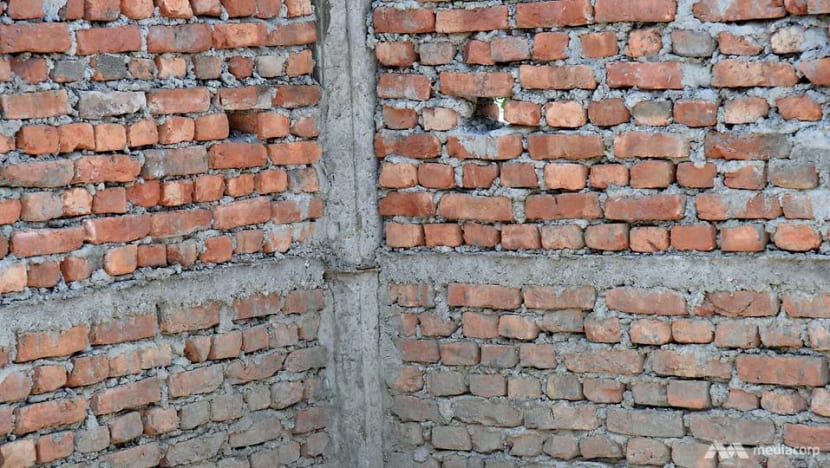
“We also used to make mix concrete based on our own judgement,” he added. “But now we’ve learnt to mix the proper ratios as per the instructions of the engineer.”
It turns out that with his newfound skills, Mr Shrestha is in high demand.
“There have been many requests made by people to construct similar types of earthquake-resilient homes,” he said. “The people have requested more compared to last year...more than 12 to 15 house constructions.”
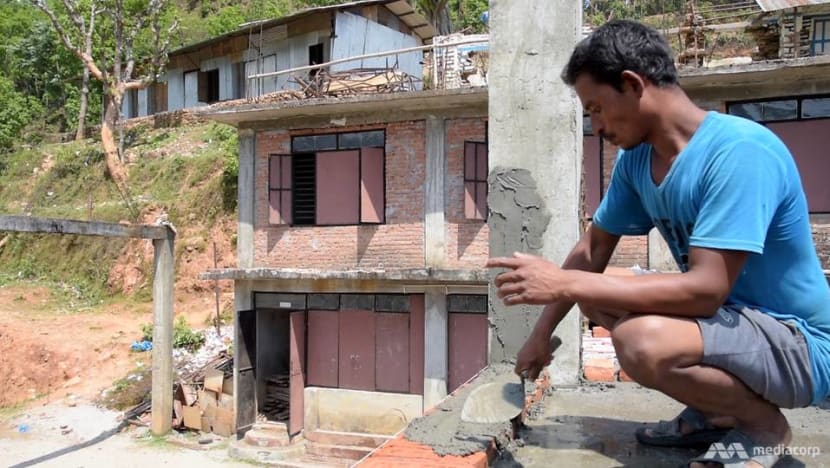
NEXT STEPS
Travelling through the mountainous terrain of Nepal’s rural areas, it was clear that picking up the pieces from the quake is still a work in process. Scores of temporary shelters – constructed of zinc sheets and bamboo – showed clear signs of having been lived in.
But earthquakes are not the only disasters that affect Nepal. Mercy Relief also hopes to reach out to farmers through what they call “Climate Smart Agriculture”.
“Mason training is just one part of our soft skills training,” said Ms Zhang. “There are droughts, there are floods...so we want to ensure that farmers can protect their crops and their livelihood in the event of a natural disaster, whatever it may be.”
In the meantime, however, the Phulpingkot community is eagerly awaiting the completion of the new, earthquake-resilient school. The school, which has more than 200 students aged 6 to 16, was badly damaged during the earthquake, with two out of its three buildings completely destroyed.
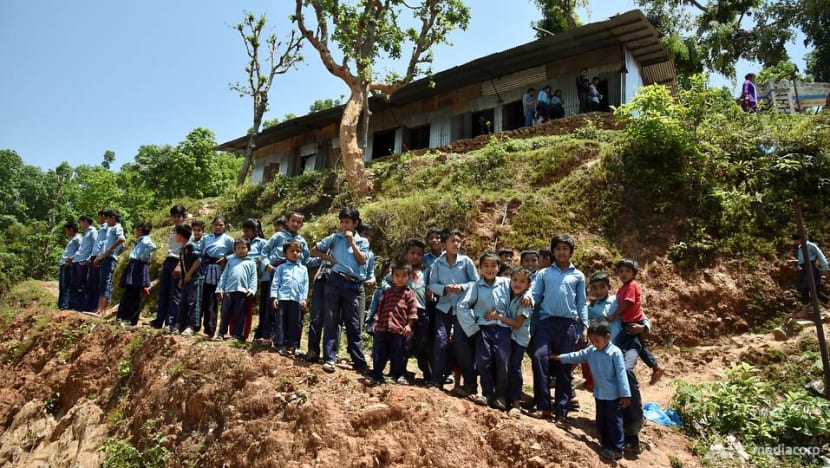
“The students were traumatised and very scared to come to school after the earthquake,” said Damber Thapa, chairman of Phulpingkot’s School Management Committee. Just 20 of the approximately 217 students in the school turned up for lessons when the zinc shelters were first constructed, he said.
But with the promise of a new, sturdy school building on the horizon, the students’ fears are starting to dissipate.
“As a new school, it will be strong, clean and earthquake-resilient, and we can deliver quality education,” he said. “Many students have felt safer, and even compared to yesterday, they are returning.
"Nineteen students have just been added today.”












